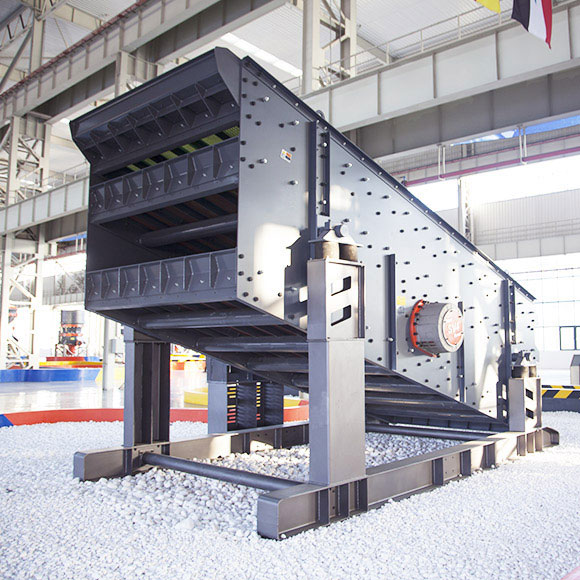A vibrating screen is a crucial piece of equipment in the aggregate and gravel production process, responsible for sorting and classifying materials into different sizes for further processing. The design of an efficient vibrating screen is vital for ensuring high productivity, accurate separation, and minimizing downtime in aggregate production plants.
1. Screening Process and Requirements
The primary function of a vibrating screen is to separate materials by particle size. In the case of gravel and aggregates, the screen will typically classify materials into coarse, medium, and fine fractions. These fractions can then be used in various construction and industrial applications. The design of the vibrating screen must accommodate the type of material being processed, the desired output size, and the required throughput.

The aggregate material, which may include sand, gravel, crushed stones, and other minerals, varies widely in size, shape, and composition. Therefore, the design of the vibrating screen must address the following key factors:
- Screen size: The overall dimensions of the screen need to match the material flow and capacity requirements.
- Mesh size: The screen’s mesh size should be designed to allow for effective separation of particles based on their size, ranging from fine sand to larger gravel.
- Material characteristics: The design should consider the abrasiveness, moisture content, and particle shape of the material.
2. Types of Vibrating Screens
There are several types of vibrating screens used in aggregate and gravel processing, including:
- Linear Vibrating Screens: These screens produce a linear motion that helps move the material across the surface in a straight line. This type of screen is ideal for applications where the material needs to be evenly distributed and efficiently separated.
- Circular Vibrating Screens: These screens use a circular motion, causing the material to travel in a circular path. They are ideal for coarse material separation and are commonly used in heavy-duty applications.
3. Vibrating Screen Components
A vibrating screen is composed of several key components, each contributing to the performance and efficiency of the machine:
- Screen Deck: The screen deck is the surface where materials are separated. It is made from wire mesh or perforated plates, depending on the desired size and durability. The deck is typically inclined at an angle to promote material flow.
- Vibrating Mechanism: The vibrating mechanism is typically powered by either an electric motor or a pair of vibrating motors. This mechanism generates the vibrating motion needed to move the material across the screen surface. The vibration is typically adjustable to suit the material type and processing requirements.
- Springs: Springs are used to absorb the vibrations and reduce the transmission of force to the supporting structure. Proper spring tension is crucial to ensure consistent vibration and avoid damage to the machine.
- Side Plates and Frames: These components provide the structural support to the screen. They must be sturdy enough to handle the load from the material and the vibrations produced by the vibrating mechanism.
4. Performance Factors
Several factors contribute to the overall performance and efficiency of a vibrating screen for gravel and aggregate processing:
- Amplitude and Frequency: The amplitude (the height of the screen’s vibration) and frequency (the number of oscillations per minute) determine the material’s movement and separation efficiency. Adjusting these parameters ensures optimal performance.
- Screen Angle: The inclination angle of the screen deck is critical for ensuring material flow. A steeper angle promotes faster material movement but may reduce the efficiency of smaller particle separation.
- Deck Arrangement: A multi-deck screen design can be used to separate materials into more than one fraction in a single pass. This reduces the need for additional screening stages and improves overall efficiency.
5. Maintenance and Durability
Durability and ease of maintenance are important aspects of vibrating screen design. The screen’s components, such as the mesh and springs, should be constructed from high-quality, wear-resistant materials to withstand the heavy load and abrasive nature of the material. Additionally, regular maintenance and easy access to parts are crucial to minimize downtime and ensure long service life.
The design of a vibrating screen for gravel and aggregate processing must consider material characteristics, desired output, and the operational environment. By optimizing factors such as vibration amplitude, screen angle, and deck configuration, a vibrating screen can efficiently separate materials while minimizing wear and maximizing throughput. The proper selection of components and materials will ensure the longevity and reliability of the vibrating screen in demanding aggregate processing operations.

